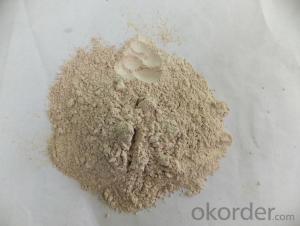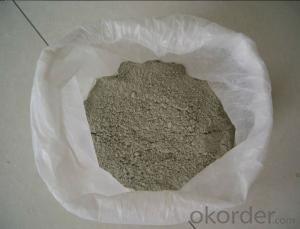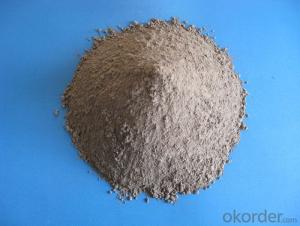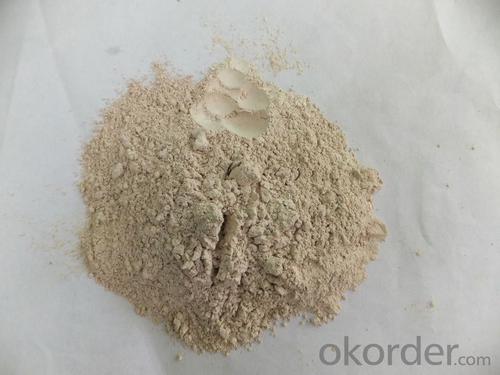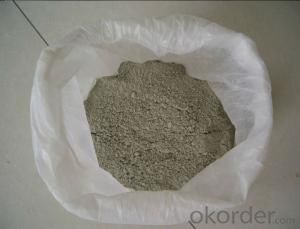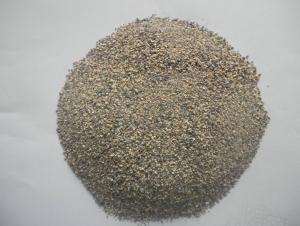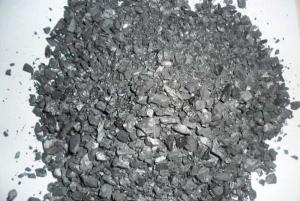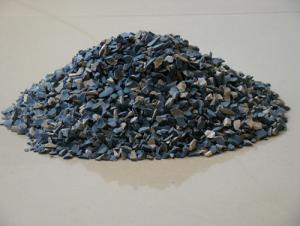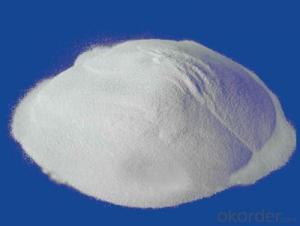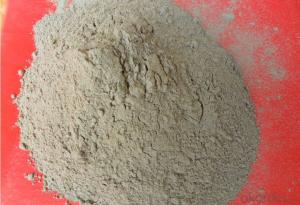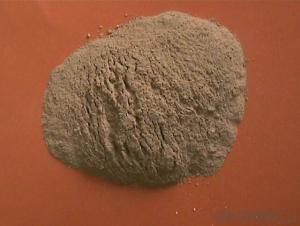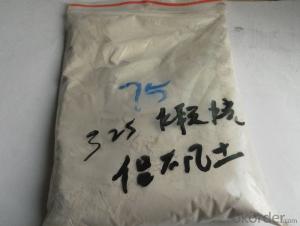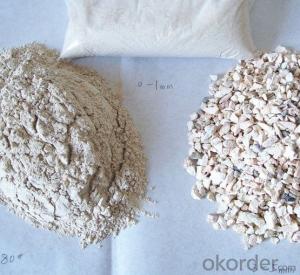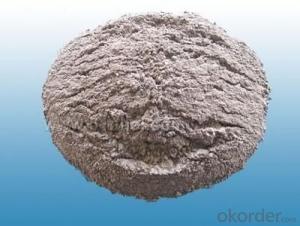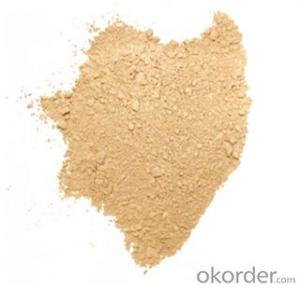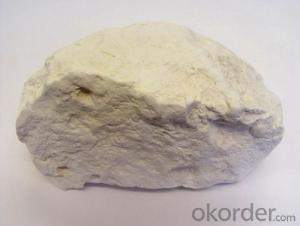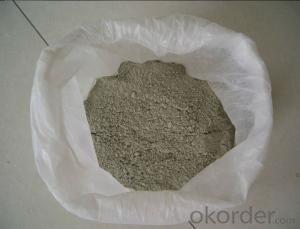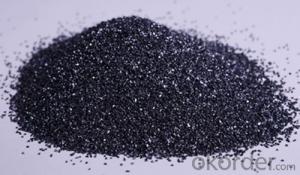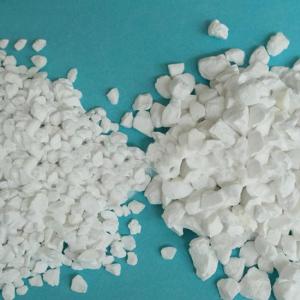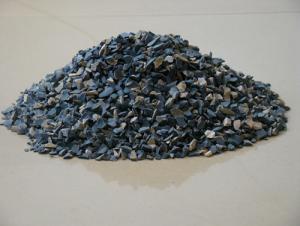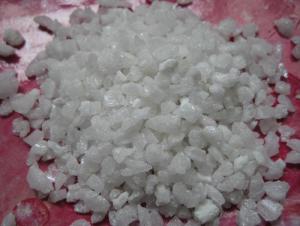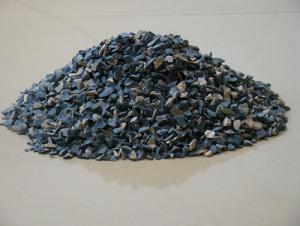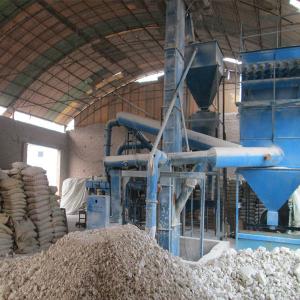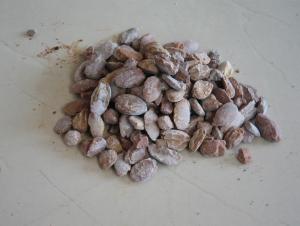Raw Materials for High Aluminum Clay Refractory Mortar with Low Porosity
- Loading Port:
- Tianjin
- Payment Terms:
- TT OR LC
- Min Order Qty:
- 20 m.t.
- Supply Capability:
- 10000 m.t./month
OKorder Service Pledge
OKorder Financial Service
You Might Also Like
About product
Sliding plate fire clay has characteristics of good bonding and high refractoriness. It is the ideal material for filling sliding aperture.
Advantages
1). Physicochemical stability.
2). Non-toxic,Heat-resistance,Safe .
3). High Al2O3 content .
Chemical analysis
Code | SiO2 | Al2O3 | Fe2O3 | TiO2 | K2O | Na2O | CaO | MgO | Lg loss |
K9550 | 45.70 | 37.81 | 0.41 | 0.04 | 0.97 | 0.01 | 0.18 | 0.14 | 14.38 |
High aluminum refractory mortar:
Al2O3 50--70
mesh number 150
Refractoriness (Degree) 1750--1770
Clay refractory mortar
Al2O3 28--50
mesh number 80
Refractoriness (Degree) 1580—1730
Brand | Property | ||||||
LF-70 | LF-60 | LF-50 | NF-40 | NF-38 | NF-28 | ||
Al2O3 (%) | 70~75 | 60~70 | 50~60 | ≥40 | ≥38 | ≥28 | |
Refractoriness(°C) ≥ | 1770 | 1770 | 1770 | 1730 | 1690 | 1580 | |
bonding strengthMpamin 110°C*24h | 0.74 | 0.58 | 0.58 | 0.45 | 0.45 | 0.45 | |
moisture content
| 6 | 8 | 6 | ||||
mesh number | 80~150 | ||||||
Our Services:
1.Your inquiry related to our products or prices will be replied in 24hours.
2.Manufacturer with large capacity,ensure the fast production cycle after confirmed the order.
3. Our professional technicians will answer all your enquires in patient.
4. To meet the refractory solutions, we can serve as your instructions.
5. Protection of sales area and private information for all of our customers.
- Q: What kind of fireproof material is used for steel structure?
- Steel is a building material that does not burn, it is shock resistant and anti-bending. In practice, Steel can increase load capacity of the building, but also add asthetic beauty to the architecture design; Unlike concrete, it can bend and stretch. Therefore, the steel construction industry has been favored, such as one-story or multi-story buildings, skyscrapers, factories, warehouses, waiting rooms and waiting hall, which is the common use of steel. However, the steel as building materials has unavoidable defects in fire prevention, its mechanical properties such as yield point, tensile strength and modulus of elasticity, decrease abruptly due to temperature rise.
- Q: What's the function of aluminium dihydrogen phosphate on the refractories?
- Mainly used for binder of high-temperature furnace refractory. Characteristics of liquid aluminum dihydrogen phosphate, castable. solid used for refractory spraying coating, chamotte, ceramic construction, which has high break resistance after being dried in 350-500 ° C, phosphate bricks. Characteristics of the solid aluminum dihydrogen phosphate, binding agent used for castable and casting industry: together with the refractory aggregate, ramming mixes at room temperature: Easy to mix, crush resistance, hydration resistance, chamotte, will not become soft even if soaked or boiling in water, molding. Liquid use refractory spraying coating, mainly used for corundum, chrome corundum water gap in refractory industry. The production of chrome aluminum zirconium corundum brick for water-coal-slurry gasifier is especially suitable for site construction applications mainly used for the electrical industry, high-temperature kiln and furnace, hardener, after mixing between 90-110 ° C for 4-24 hours at a constant temperature, forming strong bonding strength, electrical insulation, heat treatment resistance furnace
- Q: How long is the duration of fire resistance of hollow glass magnesium board
- Glass magnesium board is non-combustible board with excellent fire resistance ability, the continuous burning time of flame is 0, non-combustible at 800℃, no flame at 1200℃, achieving the highest level of fire retardant level A1; Partition System cooperated with high-quality keel can endure fire for more than 3 hours. In the process of combustion, a large amount of heat energy can be absorbed, and the temperature of the surrounding environment will be delayed.
- Q: What is molten silicon? What refractoriness do refractories made by it have? What properties of using does it have?
- Molten silicon can be called quartz glass, which shows an amorphous silicon state. It is a liquid fusion at above 1723 degree and is an ultra-cooling state at low temperatures. It is not generated in refractories, but generated in the matrix, showing liquid state at a high temperature capable of buffering the stress with somewhat binding properties. If quartz glass is used as refractory, its function are melrly these ones. (These are what I konw for reference only.)
- Q: What are the specifications of fire resistant bag?
- Fire resistant bag is featured by wear resistance, resistance to heat, shock, acid and alkali, somke, fire, bacteria, mould and static electricity. Fire resistant bag is generally used for table top, desktop, wall face, cabinet, office furniture, wall-hung cupboard, etc. The common specifications include: 2135mm×915mm, 2440mm×915mm, 2440mm×1220mm, thickness 0.6-1.2mm. I hope it can help you.
- Q: how to classify Insulating Refractory ?
- Insulating Refractory by the physical form of the material is divided into: thermal insulation refractory slab, thermal insulation refractory blanket, thermal insulation refractory loose wool, and thermal insulation refractory irregular part. thermal insulation refractory material can also be classified by materials, temperature, manufacturing technique and application area.
- Q: How many types of fire-resistant material?
- 1. Acid fire-resistant material refers to one with more than 93% SiO2. It is featured by resistance to the corrosion of acidic slag ad high temperature and easy to react with alkaline molten slag. 2. Alkaline refractory material generally refers to one with magnesium oxide or magnesium oxide and calcium oxide as the main component. It has high refractoriness and strong resistance to basic slag. 3. Silicate aluminum refractory material refers to one with SiO2, Al2O3 as the main component. According to the content of Al2O, it can be divided into three categories: half siliceous (15-30% Al2O3), clay (Al2O3 30 ~ 48%), high aluminum (more than 48% of Al2O3). 4. Fused cast refractory material refers to shaped refractory products made by high temperature melting and casting.
- Q: who knows the fire endurance of fireproof coating?
- this is not specfied , depending on design requirements. The products we made have fire endurance from 1to 4hours . We have not done any higher.how is the fireproof coating in improving fire resistance of building components? finishing fireproof coating; wood fireproof coating; fire-resistant coating for steel structure, fire-resistant coating for concrete structures, tunnel fire retardant paint, fire retardant paint for the cable. Fire retardant coating is composed of the base materials (that is film forming substance), pigments, ordinary coating additives, fire retardant agent and dispersion medium. In addition to fire retardant agent, other components functions the same as in ordinary coating, but its performance and thickness are specifically required.
- Q: What are the material requirements of class A fire resistant door ?
- What are the material requirements of class A fire resistant door ?
- Q: Does anyone knows which company produces the better refractory materials?
- I recommend Xinjiang Yuanyangrefractory material Co., Ltd. Address: Near Xishan Road No.100, Saybagh District,Urumqi. Their products are both in good quality and reasonable price. In addition, there are Xinjiang Zhongwang refractory material factory, Address: Xi hongxi Road No. 769, Urumchi City. They all have a good reputation. You may think about it. 。
Send your message to us
Raw Materials for High Aluminum Clay Refractory Mortar with Low Porosity
- Loading Port:
- Tianjin
- Payment Terms:
- TT OR LC
- Min Order Qty:
- 20 m.t.
- Supply Capability:
- 10000 m.t./month
OKorder Service Pledge
OKorder Financial Service
Similar products
Hot products
Hot Searches
Related keywords
